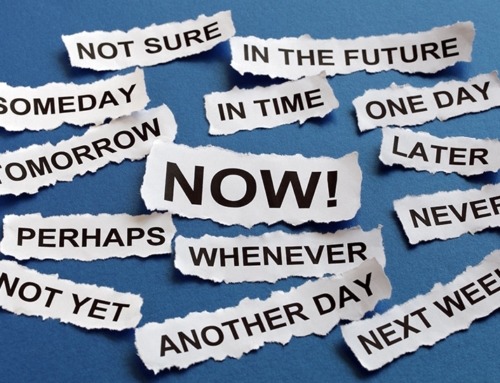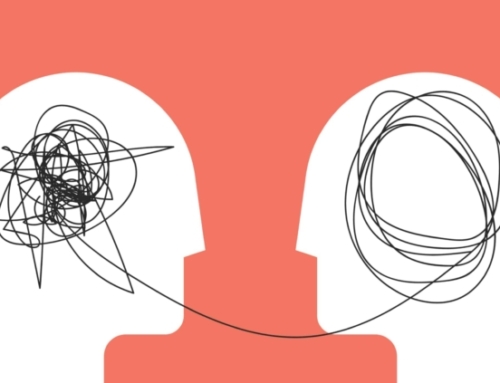I’ve received several requests to discuss psychiatry note-taking. For many, note-taking is a frustrating, thankless, and time-consuming task, one that is repeated many times each workday. Paperwork is a prime culprit of clinician burnout. Here are some ideas to make this task more efficient and more effective too.
- Admit that note-taking is a problem and resolve to solve it: It’s not that any single clinical note written is a major source of anguish. Taking notes is often a steady drip-drip-drip of frustration. It’s these chronic low-level irritants that are easy to ignore or – to phrase it more correctly – to fail to take action to resolve. So, step one in our self-help program is to admit we are powerless over note-taking, while retaining confidence that focused action can be effective. The cusp of a new year is a good time to resolve to finally tackle this ongoing stealer of precious time and good spirits.
- Clarify what “job” a clinical note must do. Having this clarity will give you a standard upon which to assess what information should be included. I’ve mentioned in earlier posts that when training residents, I’ve often found relevant information to be missing and irrelevant information included in notes. Relevance, however, can only be ascertained in reference to a particular matter or goal. Given this, we need to know what a clinical note’s “job” is. These are the five “jobs” I believe a clinical note must accomplish:
- Tracking of patient’s clinical progress: key symptoms; risks; and response to, tolerance of, and adherence to treatment must be noted. But since treatment is usually a multi-step process that may evolve over months to years, the changes across time of these variables must be tracked. One constraint is that a patient, your primary informant, is often not a good judge of progress. For example, a patient who, on the day of the visit is feeling more depressed, will have their perspective of progress up to this point and their hope for future progress colored by their current depressed mood, leading to a more pessimistic assessment of their condition and progress. Additionally, patients may focus on one salient symptom as a proxy on which to judge overall response. For example, in depression, mood is often late to respond. The patient may be more functional, more rested, with improved sleep or appetite, but not notice these improvements due to the effects of mood-dependent attention and memory. So, the clinician can get a better sense of response to treatment through viewing the severity of symptoms as reported contemporaneously at each visit and constructing a timeline of severity based on the series of these contemporaneous reports. Of course, using some formal or informal rating scale at each visit makes this symptom tracking easier and more valid.
- Reminder to one’s self: the clinician often needs to refer to previous notes as a reminder of what occurred at last visit, what treatment recommendations were made, and what tasks to complete were noted for the current visit. For example, you may wish to include in your note that at the next visit a certain topic should be discussed, rating scale completed, or lab obtained. Then at the next visit, you refer back to the previous note.
- Communication to other clinicians: when another clinician, either from the mental health team or medical team reads your note, will it include relevant information to guide them in their decision-making? Also, since no one a lot of time available for reading other clinician’s notes, is you note informative and concise?
- Insurance and Institutional Requirements: You probably use only a few different procedure codes. Ensure you’re familiar with the tasks that need to be completed to support that code and that you include the requisite information in your notes. Certain institutions, like the VA, also have their own required information that must be ascertained and entered.
- Medical-legal risk management: the three key words to keep in mind here are “risk,” “appropriateness,” and “justification.” Clinicians get sued for malpractice in cases of bad outcomes. (Of course, other factors are also needed, but I won’t discuss them here.) So, at every visit you need to document the nature and level of risk; that you’ve taken appropriate action to address the risk; and the justification for the clinical actions taken, that is, that they were necessary and appropriate to address the risk. (This is a great topic to expand upon and I will do so in upcoming weeks.)
- Become a power-user of your EMR. If you have an EMR at your practice or institution and you hate using it, and you don’t have the authority to change it or want to switch jobs, then bite the bullet and learn to use the system you have. One not particularly fun day spent learning the tricks and shortcuts available can save you hundreds of hours each year, while also giving you the satisfaction of mastery.
- Consider dictation: If you have a private practice, consider dictating your notes. It requires an investment of time to train your human or software transcriber. The software can’t be fully trusted yet, however. So, you will need to read the dictated notes and correct them. This step obviates the benefit for many clinicians. With a human transcriber, especially one dedicated to you, you can work out the kinks and end up working together more smoothly. Your transcriber learns to understand your speech better, and you learn when you need to annunciate better or spell out technical terms. Clinicians who dictate are often extremely fast and complete, and save time.
- Beautiful sentences are not necessary: most of us probably had some mentor during training who wanted (demanded) we write beautiful prose and include complex psychological formulations. This may be a worthwhile endeavor during training but should not be continued afterward. Notes that are too long are unlikely to be read. If you engage patients in depth insight therapy, you can consider keeping separate therapy notes, ones that are not entered into the medical record. I like good prose as much as anyone, but we can’t be Harry Stack Sullivan these days. Even he wouldn’t be Harry Stack Sullivan these days. Writing in bullet points is fine. Each word should work to further the jobs a clinical note must accomplish.
- If you use note templates, do so with care: templates are good except when they have prefilled information that you don’t edit based on your clinical findings. Also, if you copy and paste text, you cannot keep transferring information from one appointment to the next without altering it. If you copy and paste text, you must read through all of it each time, as if you wrote it from scratch. I’ve done some chart reviews for attorneys, and its painfully obvious what text was just copied over and over from one appointment to the next for weeks or months. It’s not a good look when a problem arises.
- Don’t let note-taking become more important than patient care. Ensure you look at, listen to, and think about the patient more than you look at and think about your note.
To summarize, use the fewest words to do a clinical note’s five jobs and use shortcuts expertly. But most importantly, resolve that you’re just not going to put up with the chronic dull pain of ineffective note-taking and commit to resolving it. Set operationalized goals and track your progress. Can you save 30 minutes a day?
Before you go: please send your tips on note-taking that we can share with everyone. What has worked and not worked for you? Be specific.
I mentioned I like good prose. So in the quote section, I quote the first paragraph of Winter’s Bone, a piece of text that left an impression on me. Also, know that this first paragraph pretty well prefigures all that is to come in this story. The text is both so literary and so true to a real-life scene. See if you can catch its many allusions.
Dr. Jack
LanguageBrief
Today’s Quotes
“Ree Dolley stood at break of day on her cold front steps and smelled coming flurries and saw meat. Meat hung from trees across the creek. The carcasses hung pale of flesh with a fatty gleam from low limbs of saplings in the side yards. Three halt haggard houses formed a kneeling rank on the far creekside and each had two or more skinned torsos dangling by rope from sagged limbs, venison left to the weather for two nights and three days so the early blossoming of decay might round the flavor, sweeten that meat to the bone.”
Daniel Woodrell







Leave A Comment